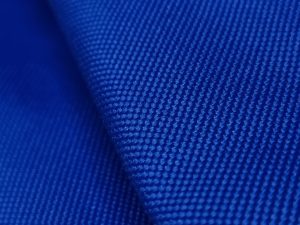Discover the Amazing Properties of Polyester Fabric
9th February, 2023
Polyester fabric is a popular choice for clothing, outdoor gear, and home textiles due to its amazing properties.
But what exactly makes polyester fabric so special? In this blog post, we’ll take a closer look at the properties of polyester fabric and discuss why they make it the perfect choice for your next project.
Properties of Polyester Fabric
When it comes to understanding the properties of polyester fabric, it’s important to first understand what polyester is.
Polyester is a synthetic polymer made from a chemical reaction between coal, water, air, and petroleum.
This reaction produces long chains of molecules called polymers, which are then woven into a fabric.
The properties of polyester fabric are a direct result of the chemical structure of these polymers.
Durability
One of the most notable properties of polyester fabric is its durability.
The strong chemical bonds between the polymer molecules give the fabric a high resistance to tearing, stretching, and abrasion. This makes it a great choice for clothing and outdoor gear that will be worn and used frequently.
Polyester fabric can also withstand high temperatures, making it suitable for use in industrial and manufacturing settings.
Wrinkle Resistance
Another key property of polyester fabric is its wrinkle resistance.
Unlike natural fibres like cotton and linen, polyester fibres are not affected by water and humidity. This means that polyester fabric will not shrink or wrinkle as easily as other fabrics.
This property makes it a great choice for clothing and home textiles that need to maintain their shape and appearance.
Moisture-Wicking
Polyester fabric is also known for its moisture-wicking properties. This means that it can quickly transport sweat away from the skin and into the fabric, where it can evaporate.
This property makes it a great choice for athletic clothing and outdoor gear, as it helps to keep the wearer cool and dry.
Colour fastness
Finally, polyester fabric is known for its colour fastness. The chemical structure of the polymers means that the fabric will not easily fade or bleed when washed.
This makes it a great choice for clothing, home textiles, and outdoor gear that will be exposed to sunlight and other environmental factors.
Uses of Polyester Fabric
Here are a few examples of how polyester fabric is used in different industries:
Clothing Industry
One of the most common uses of polyester fabric is in clothing. Its wrinkle resistance and colourfastness properties make it a great choice for garments that need to maintain their shape and appearance.
Additionally, its moisture-wicking properties make it a popular choice for athletic wear and activewear.
Outdoor Gear
Polyester fabric is also commonly used in outdoor gear such as tents, sleeping bags, and backpacks. Its durability and resistance to water and mildew make it a great choice for gear that will be exposed to the elements.
Also, its moisture-wicking properties make it a popular choice for hiking and camping clothing.
Home Textiles
Polyester fabric is also used in home textiles such as sheets, curtains, and upholstery. Its wrinkle resistance and colour fastness properties make it a great choice for home textiles that need to maintain their shape and appearance.
Additionally, its durability makes it suitable for high-traffic areas such as living room furniture.
Industrial and Manufacturing
In addition to its use in clothing and outdoor gear, polyester fabric is also commonly used in industrial and manufacturing settings.
Its high resistance to tearing, stretching and abrasion, as well as its ability to withstand high temperatures, make it suitable for use in conveyor belts, safety equipment, and industrial filters.
Care and Maintenance of Polyester Fabric
Proper care and maintenance of polyester fabric is important to maintain its properties and prolong its lifespan. Here are some tips on how to properly care for your polyester fabric:
Check the Care Label: Always check the care label before washing or drying your polyester fabric. The care label will provide specific instructions on how to clean and care for the fabric.
Wash in Cold or Warm Water: To prevent shrinking, it’s best to wash polyester fabric in cold water. Avoid using bleach or fabric softeners, as these can damage the fabric.
Use a Gentle Cycle: When washing polyester fabric, it’s best to use a gentle cycle to prevent stretching and abrasion.
Tumble Dry Low: To prevent shrinkage and fading, it’s best to tumble dry polyester fabric on a low setting. Avoid using high heat or over-drying the fabric.
Iron on a Low Setting: If ironing is necessary, use a low setting and avoid using steam.
Conclusion:
Polyester fabric is a versatile and dependable material that offers a wide range of properties. By understanding the properties and uses of polyester fabric, you can make an informed choice when selecting it for your next project.
Visit us at UK Fabrics Online to check our polyester range.


Leave a Reply